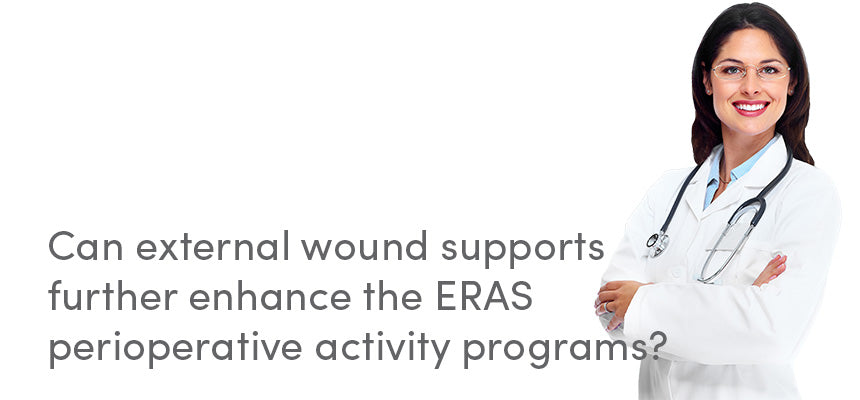Early activity after any type of surgery is well documented to reduce pneumonia, blood clots, muscle weakness and other aggravating conditions. Getting active as soon as possible may also shorten a patient’s length of stay in the hospital even after large interventions such as open heart surgery or major abdominal interventions.
Recommendations for fast track recovery are growing in all surgical specialities. The ERAS society (Enhanced Recovery after Surgery) has taken a leading role in developing perioperative care programs with the aim to improve recovery through research, education, audit and implementation of evidence-based practice. ERAS, established in 2001, has published guidelines for a variety of interventions both for health care staff and for patients.
Early mobilization of the post surgical patient is an integral part of the ERAS recommendations. However, it seems that it is one thing to instruct patients to mobilize, and another to make sure the patients actually comply with such instructions.
A systematic review of literature showed compliance to be just 48% on the first post-operative day and 28% on the following day. The question was raised whether there is enough available evidence to guide clinicians in effective early mobilization protocols that increase mobilization and improve outcomes.
Patients are instructed both verbally and in written guidelines about the importance of early activity after surgery. The instructions are similar among institutions. Here are examples of how patients should mobilize after colorectal surgery:
“Following your operation, when you wake up, it is important that you perform deep breathing exercises. Breathe in through your nose and relax the air out through your mouth, undertake this at least five times an hour. Do cough when you need to try holding your abdomen to reduce the pain. The staff will help you out of bed after your operation. You should try to spend up to two hours out of bed on the day of your operation.”
“Good pain control improves your recovery as you can walk about, breathe deeply, eat and drink, feel relaxed and sleep well. You may have a tiny tube in your back (epidural).”
“By being out of bed in a more upright position and by walking regularly, your breathing is improved and there is less chance of you developing a chest infection or clots in your legs and your bowel function usually also recovers faster. Do cough when you need to try holding your abdomen to reduce the pain.”
Why are patients not compliant with straight forward instructions when it is clearly beneficial for their recovery? Is it because the instructions require the patients to be highly self-motivated to actually perform them? In which case exercise would mostly be done if a nurse, physical therapist or family member is available and assists the patient to be active.
How can patients be encouraged to be better at motivating them selves to do deep breathing exercises, walk the recommended distances and stay out of bed as recommended in the ERAS programs? A literature review showed that standardized mobility protocols that begin as early as possible had the best results. Compliance may also be improved when patients use a diary, use a pedometer, and when there is no in-room entertainment system.
Most suggestions to improve compliance with activity programs rely on nurses or physical therapists to assist with “enforcing” mobilization. If personnel is needed to make sure patients mobilize, improvements in compliance with activity goals might not be in sight soon. With todays economic restrictions, institutions might hesitate to hire additional staff for exercising with the patients.
Let’s take a moment to imagine (or remember…) how most patients feel after surgery: The incision hurts, muscles are sore, breathing is difficult, coughing painful, and the spirit is low. Although adequate pain medication is an important part of the ERAS protocol, many patients worry about addiction and might not ask for pain killers. All together, seeing the situation from the patients point of view, it is understandable that many find it difficult to jump out of bed and follow the exercise guidelines. They need support, both physically and mentally.

Let’s then imagine another scenario: The patient is now equipped with a comfortable external wound support which surrounds the body at the incision level and supports not only the wound but also the sore muscles and helps to make coughing less painful. Whether the surgery is a major abdominal intervention or heart surgery involving a sternotomy, such support improves the patients posture, which enhances deeper breathing and it assists in walking better and longer. Furthermore the patient will have the hands free to help himself to a safer balance since the wound is now constantly supported. External wound supports have also been shown to decrease pain.

External wound supports have not yet been considered as standard adjunctive therapy in ERAS protocols. Yet, they could very well be an important complementary treatment that easily fits into the fast track regimes. In addition, they could help patients to be more compliant with the activity protocols in the hospital and at home.
What is your opinion?
Let us know in a comment below.




Leave a comment: